 Image 1 of 17
Image 1 of 17

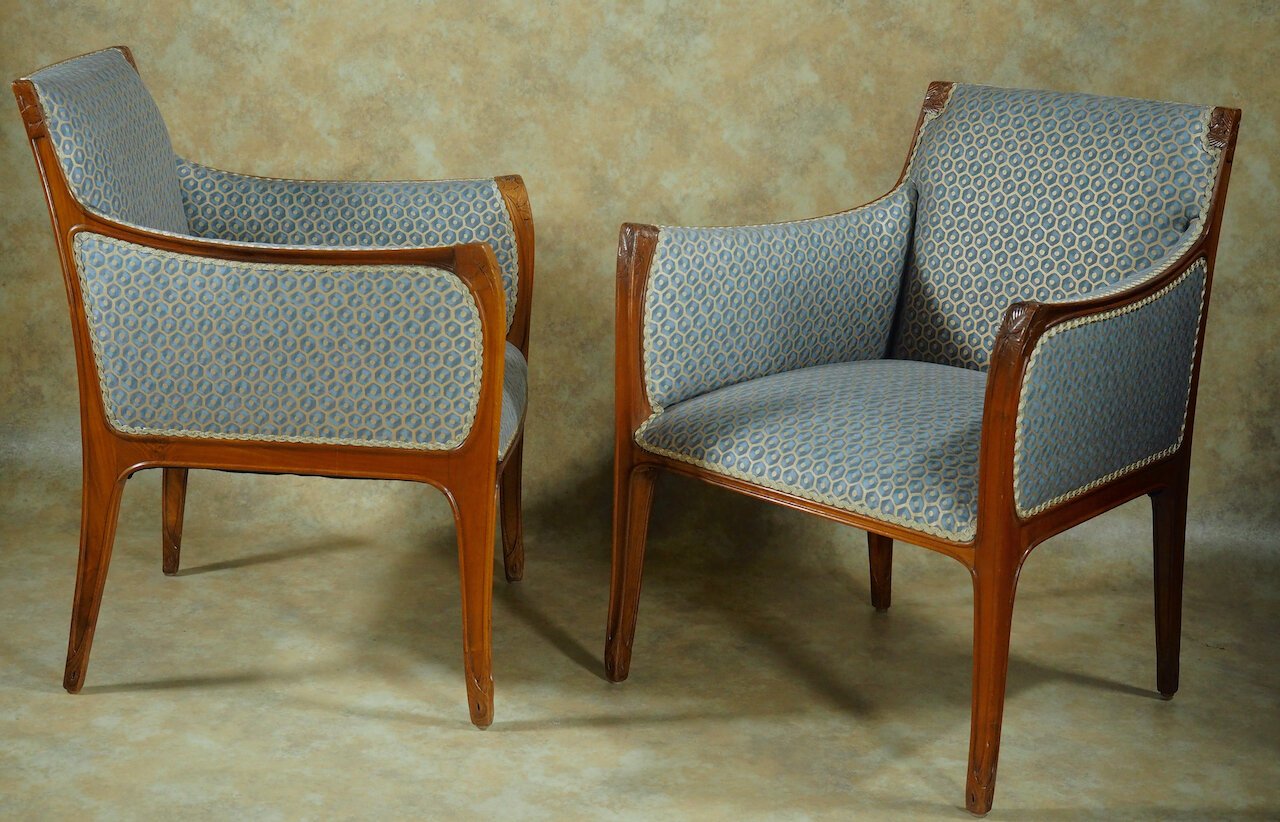 Image 2 of 17
Image 2 of 17

 Image 3 of 17
Image 3 of 17

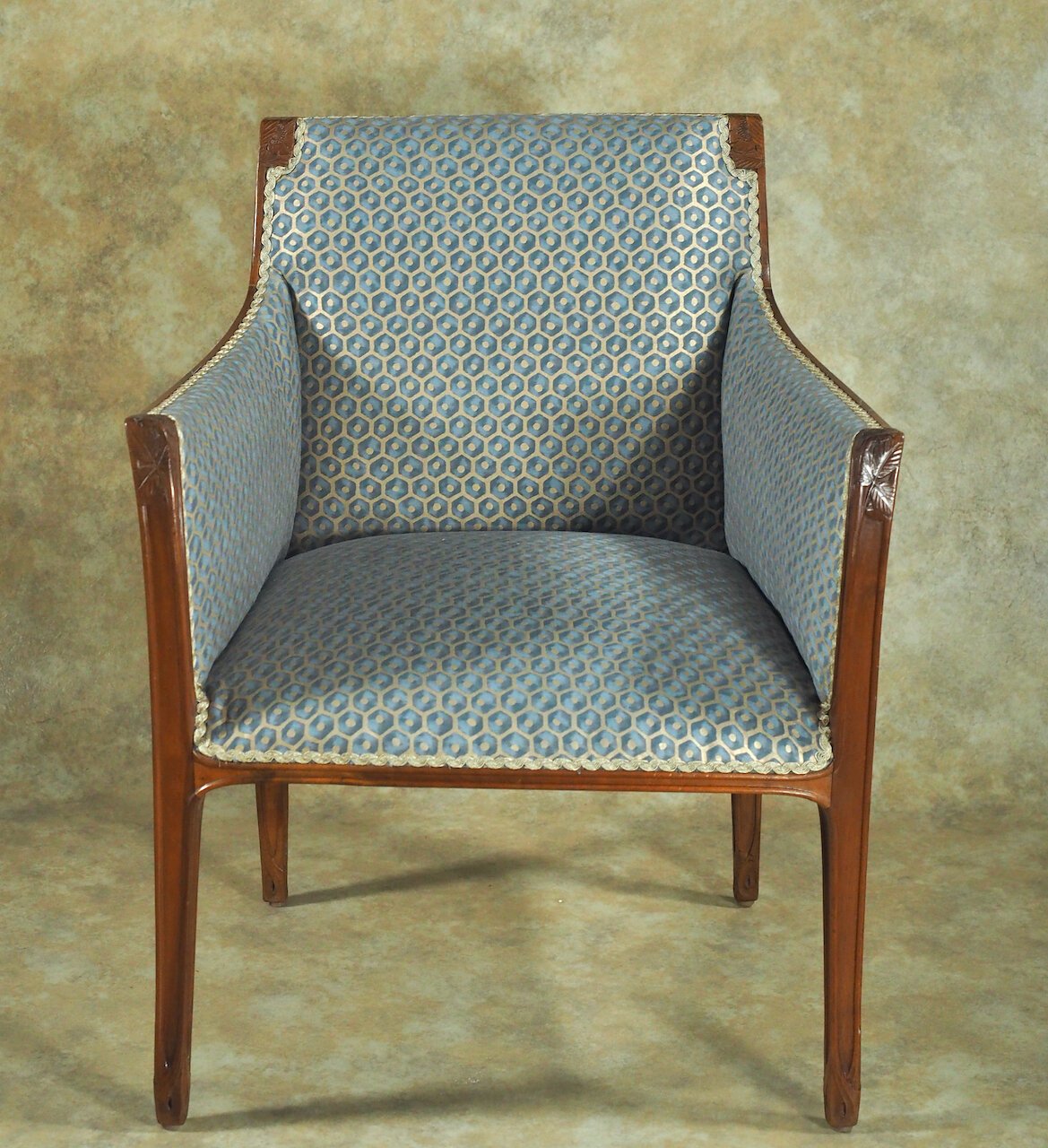 Image 4 of 17
Image 4 of 17

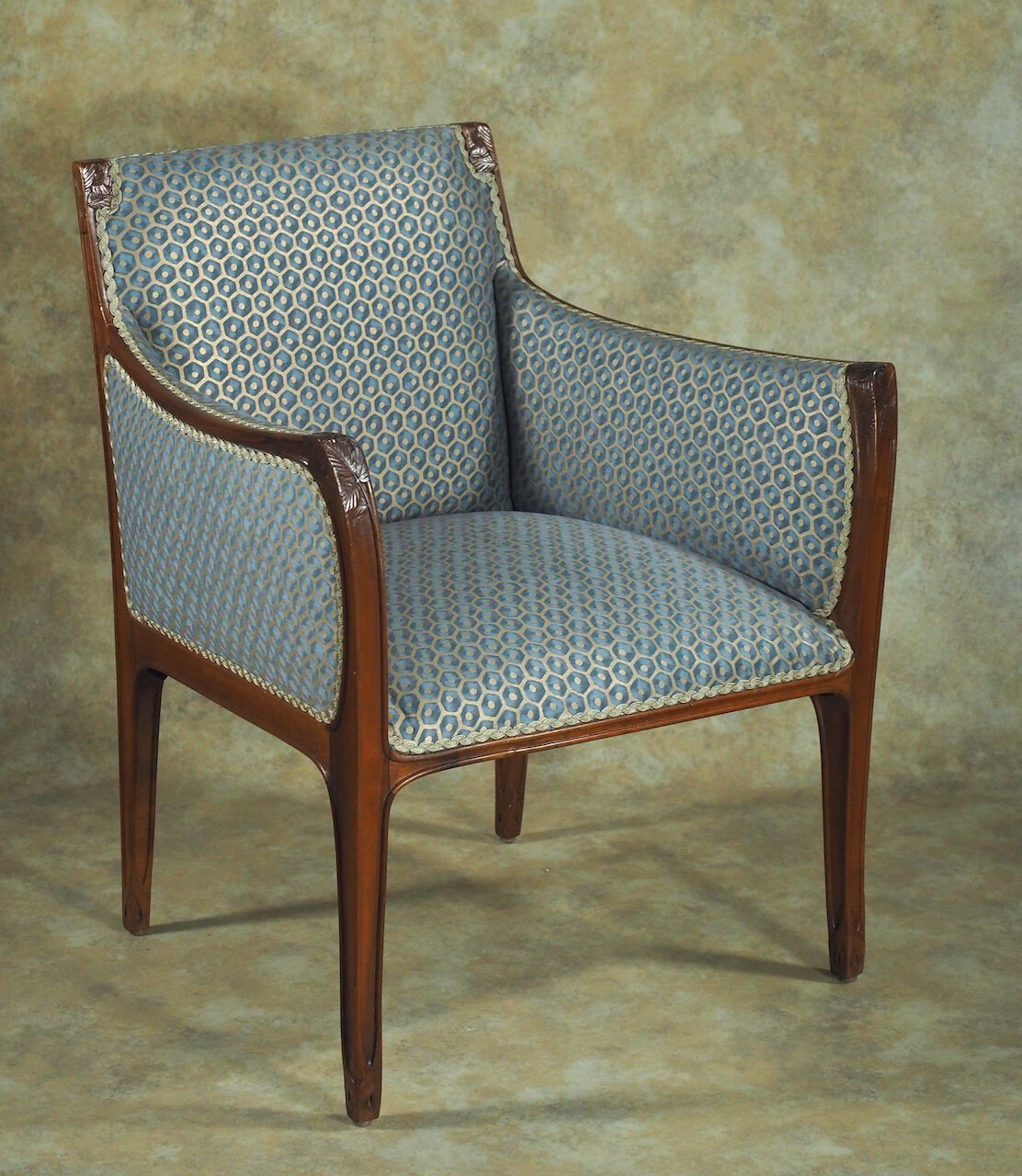 Image 5 of 17
Image 5 of 17

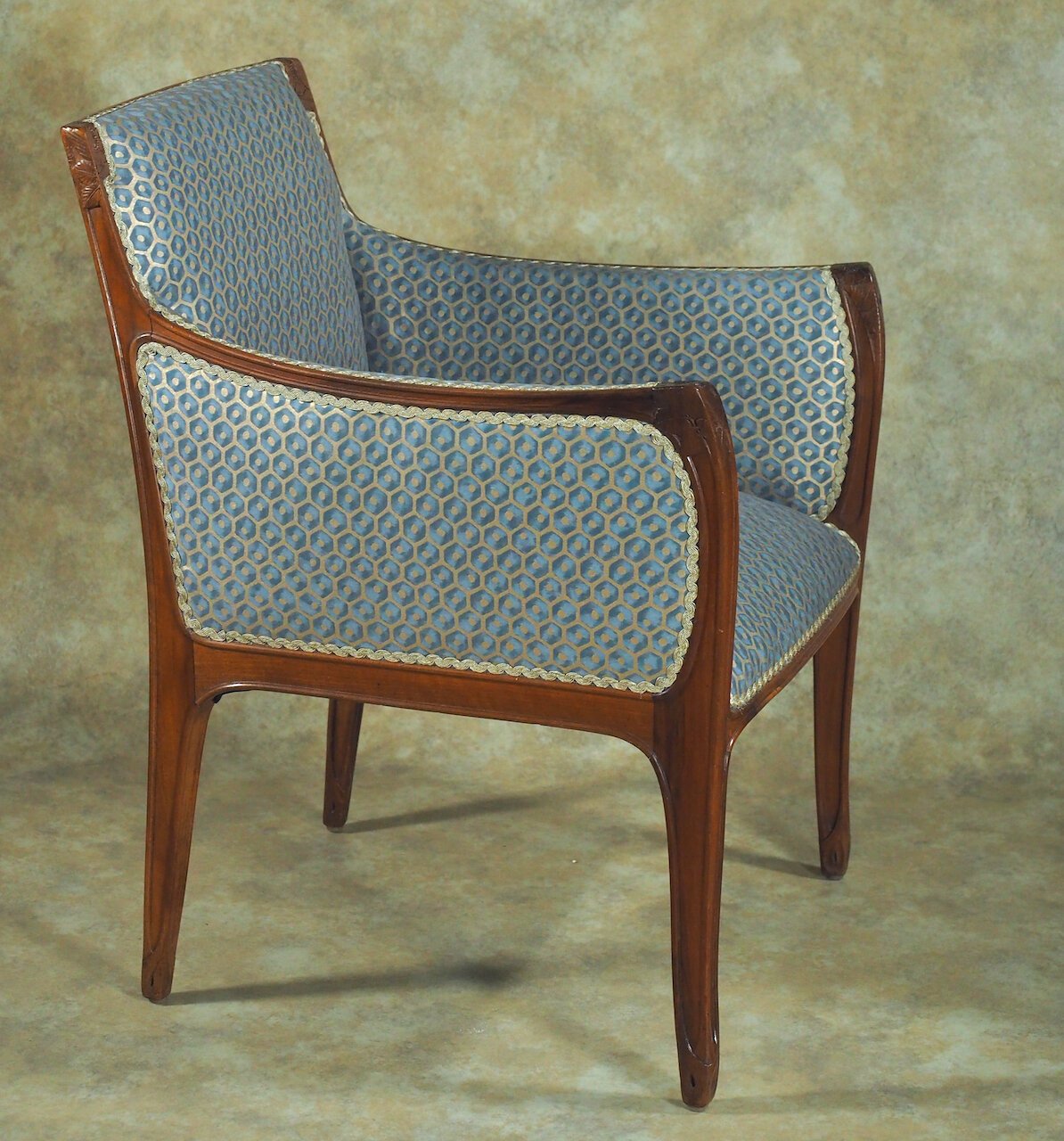 Image 6 of 17
Image 6 of 17

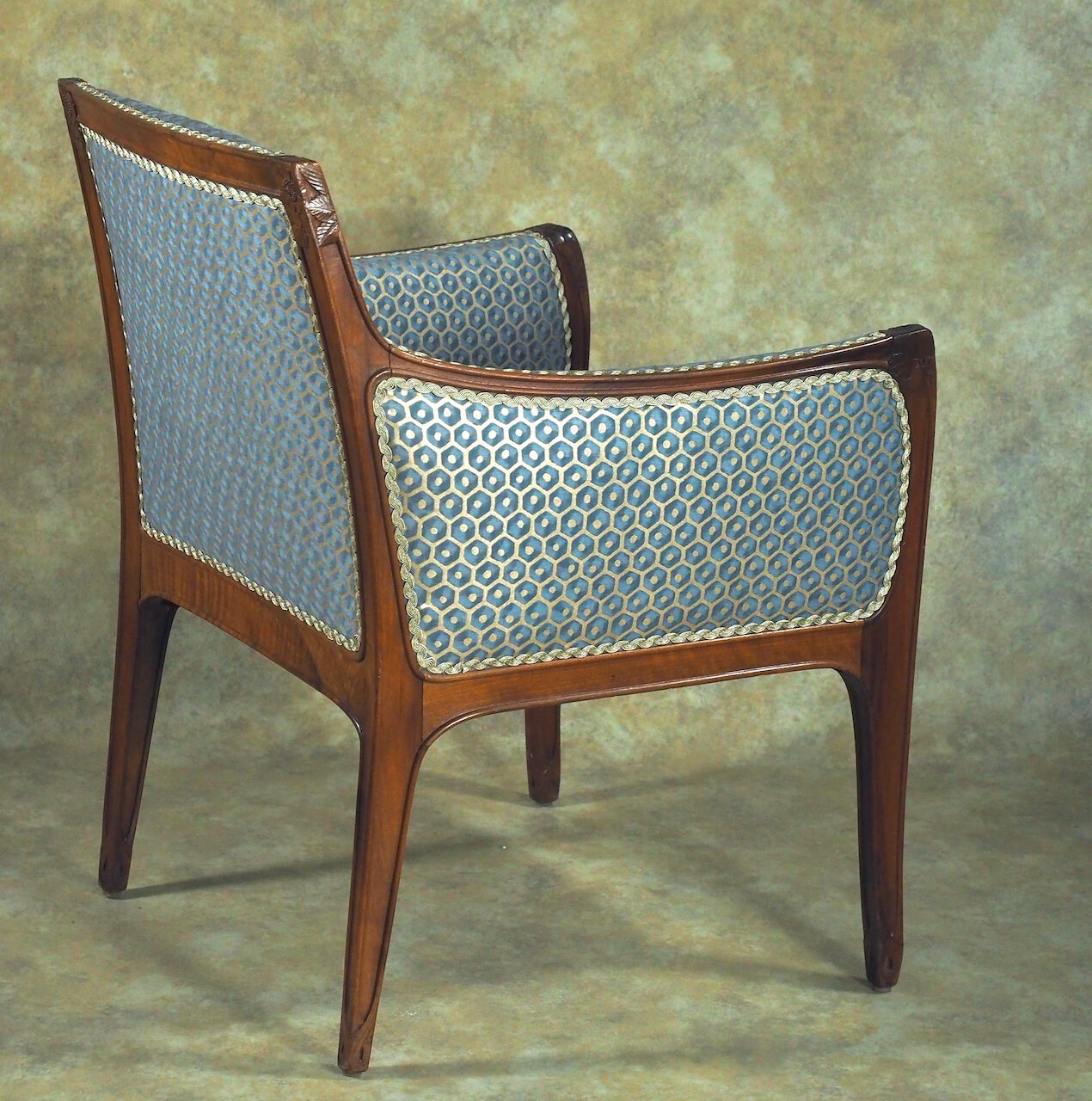 Image 7 of 17
Image 7 of 17

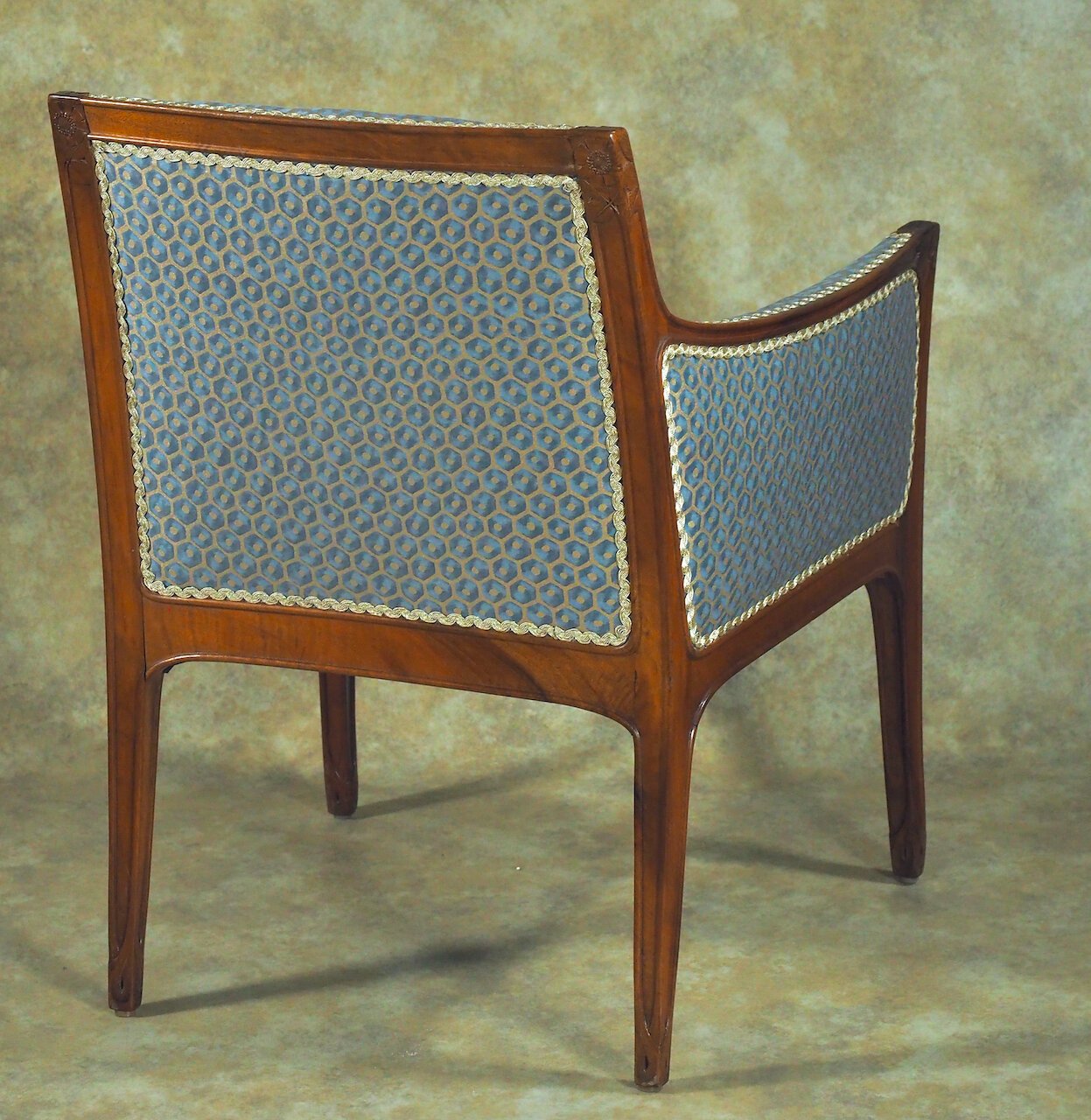 Image 8 of 17
Image 8 of 17

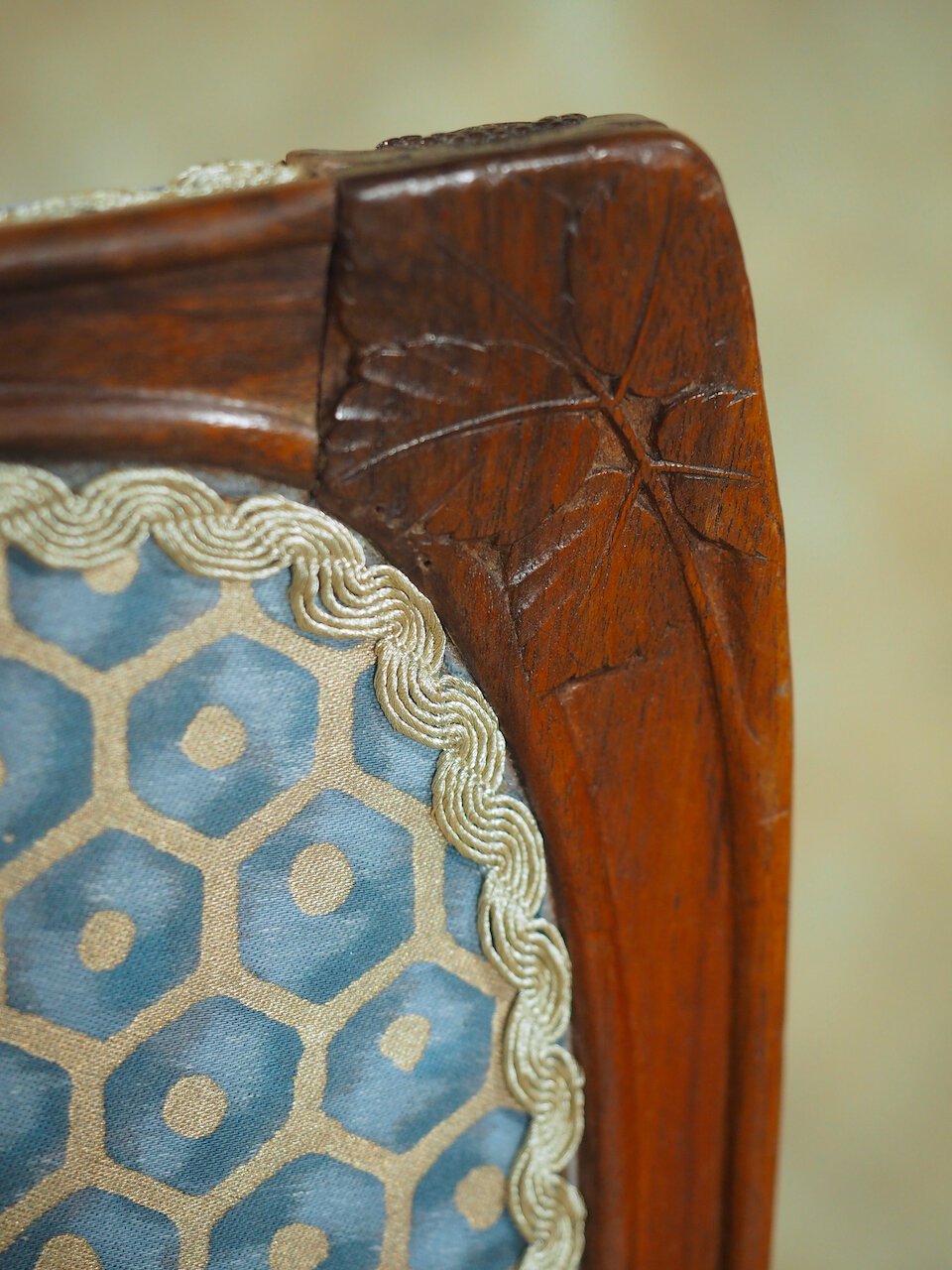 Image 9 of 17
Image 9 of 17

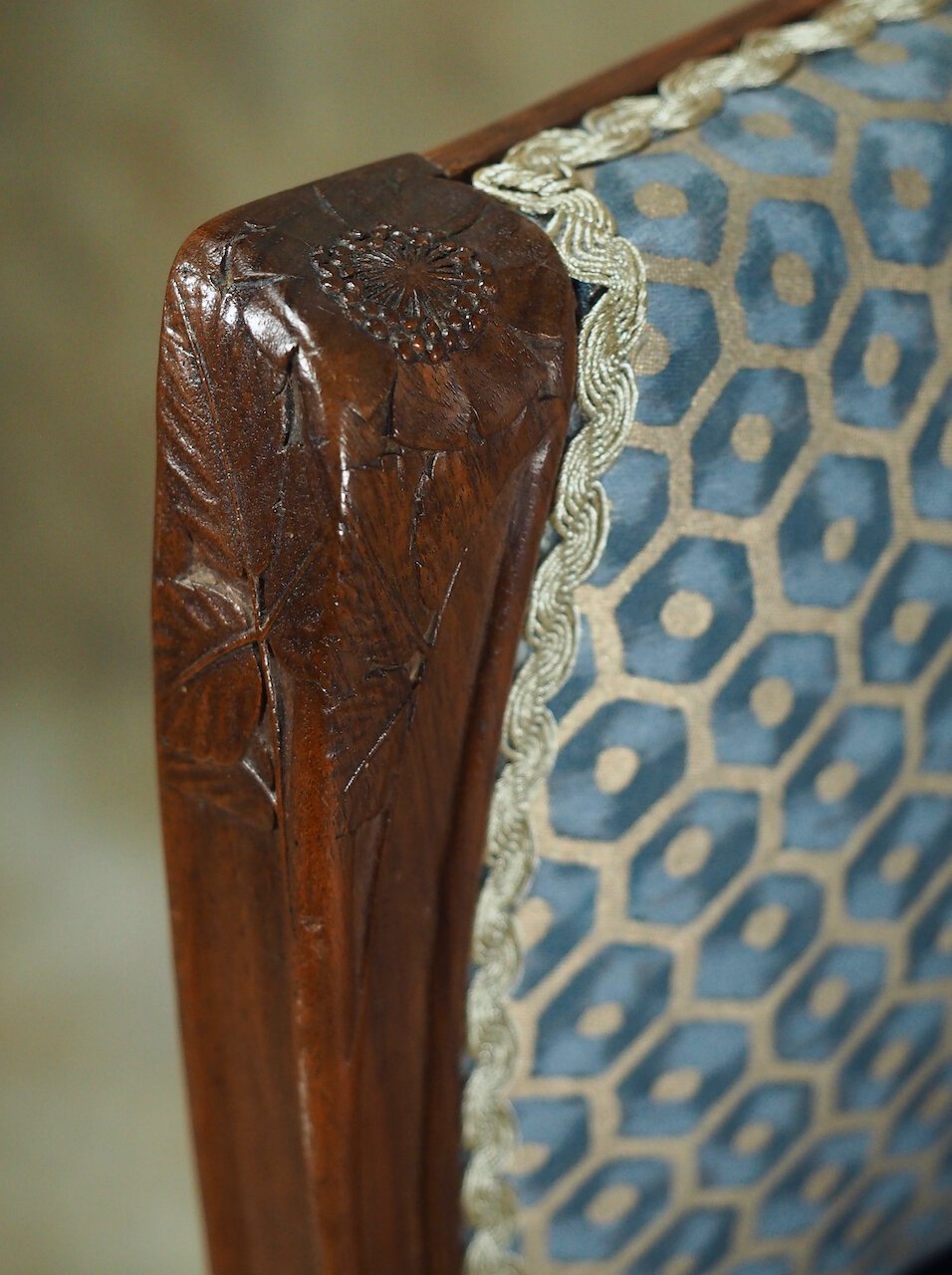 Image 10 of 17
Image 10 of 17

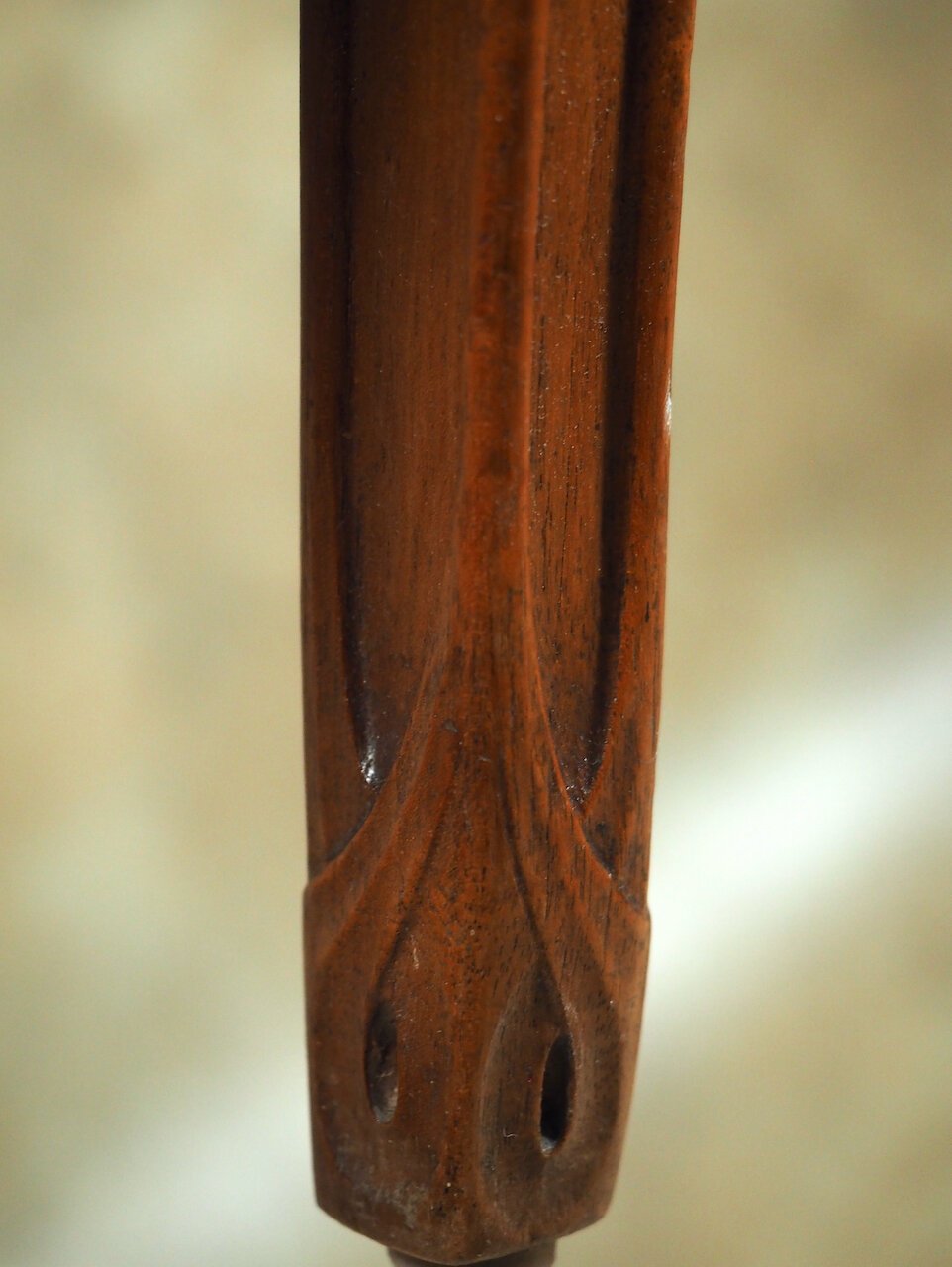 Image 11 of 17
Image 11 of 17

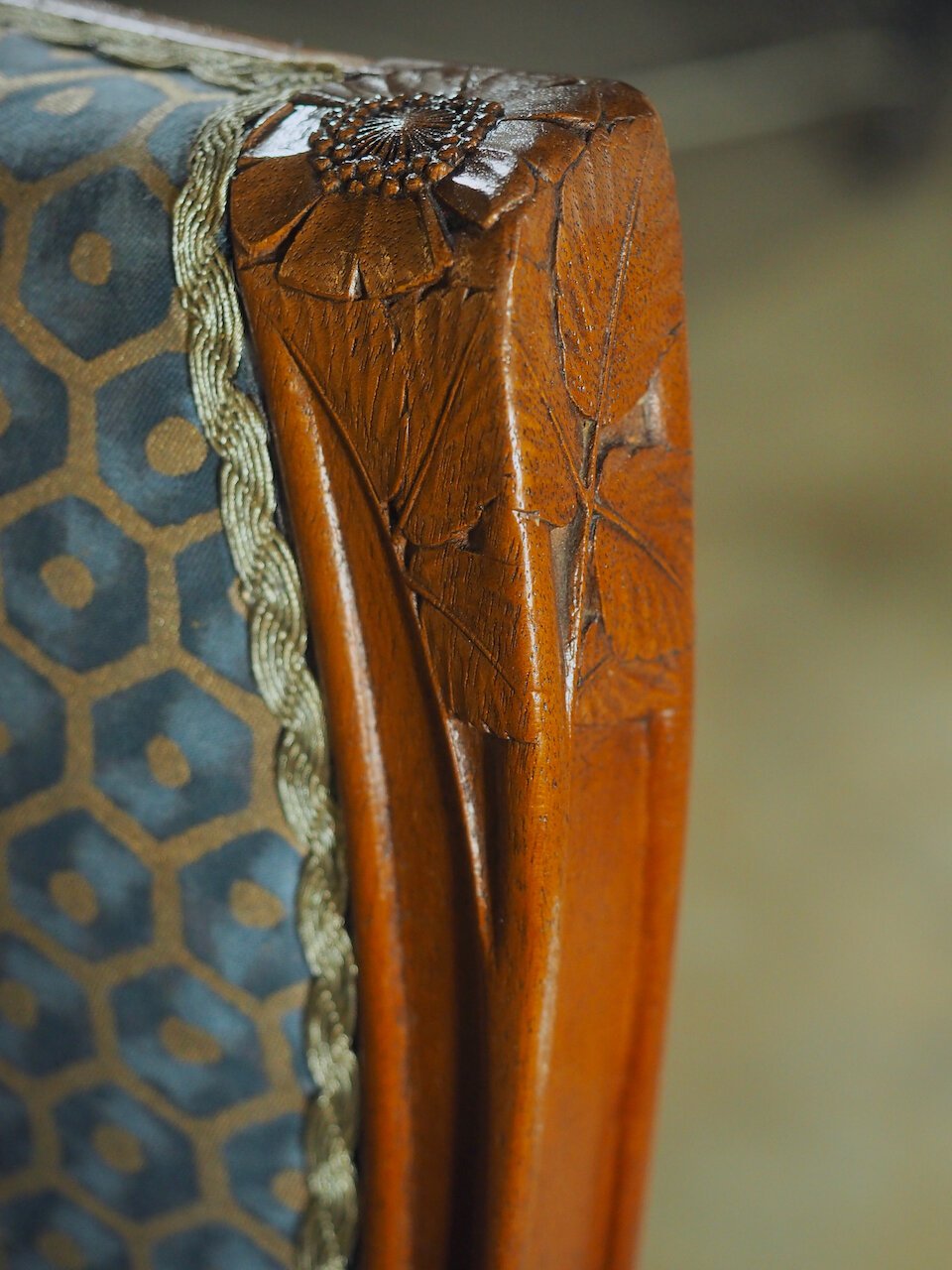 Image 12 of 17
Image 12 of 17

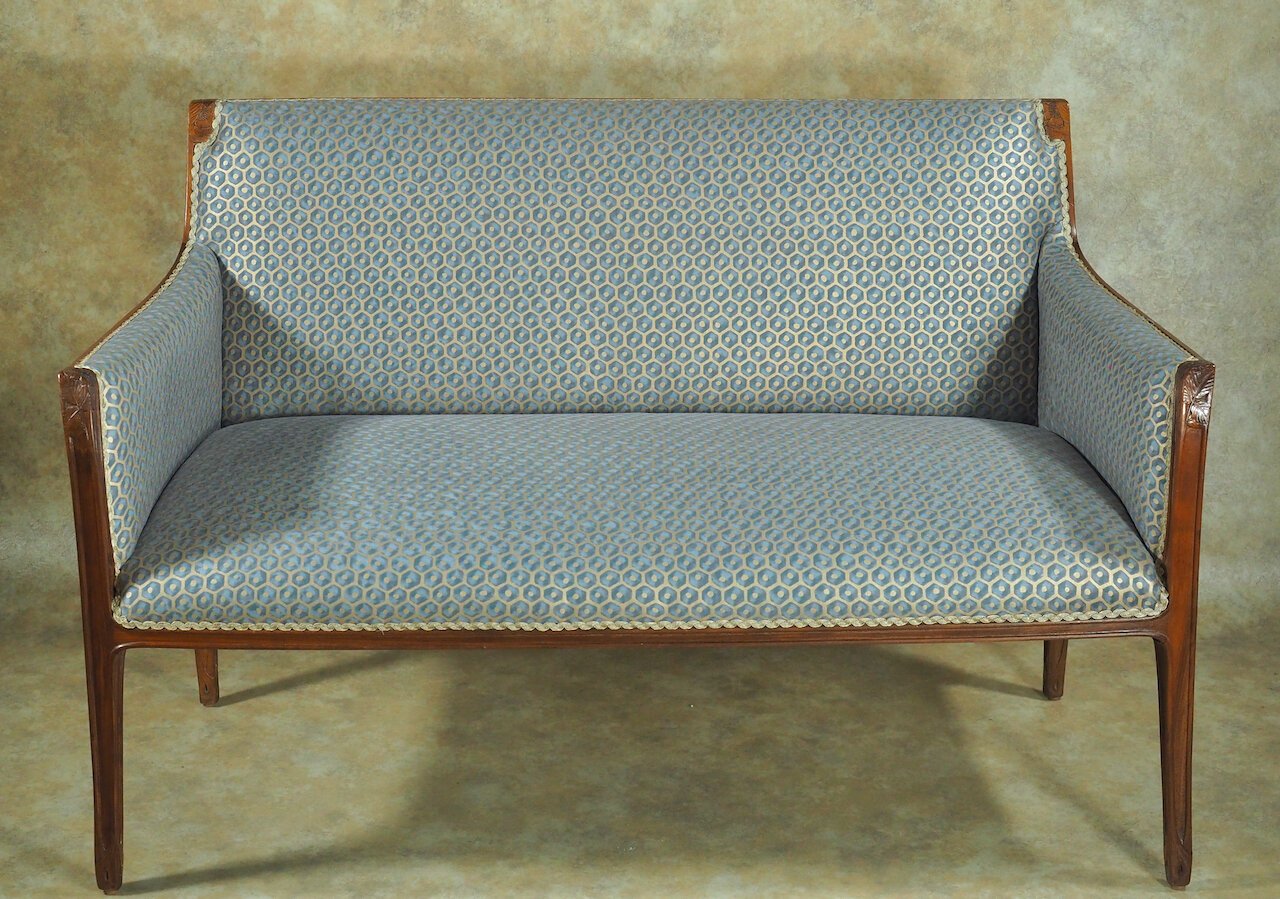 Image 13 of 17
Image 13 of 17

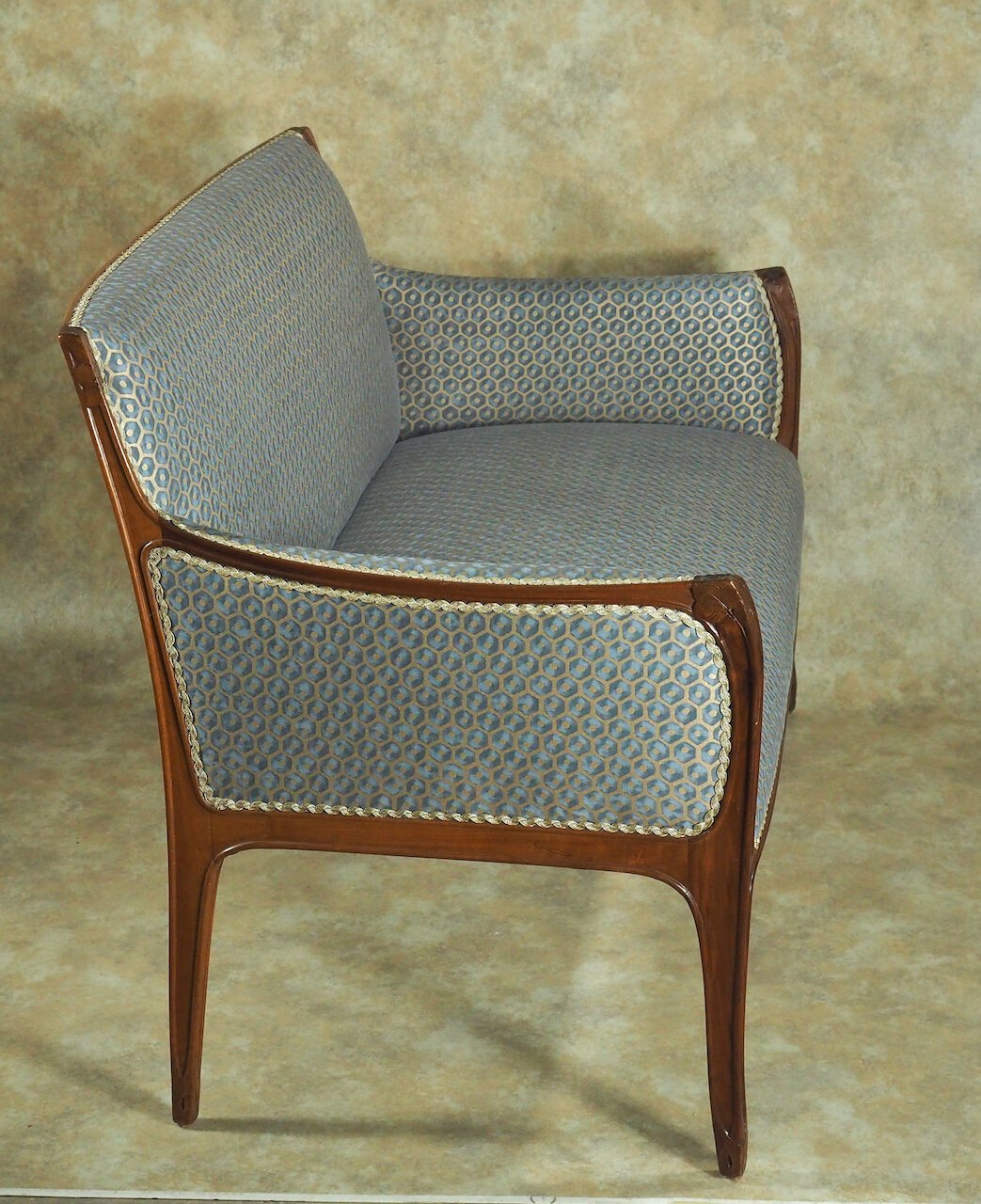 Image 14 of 17
Image 14 of 17

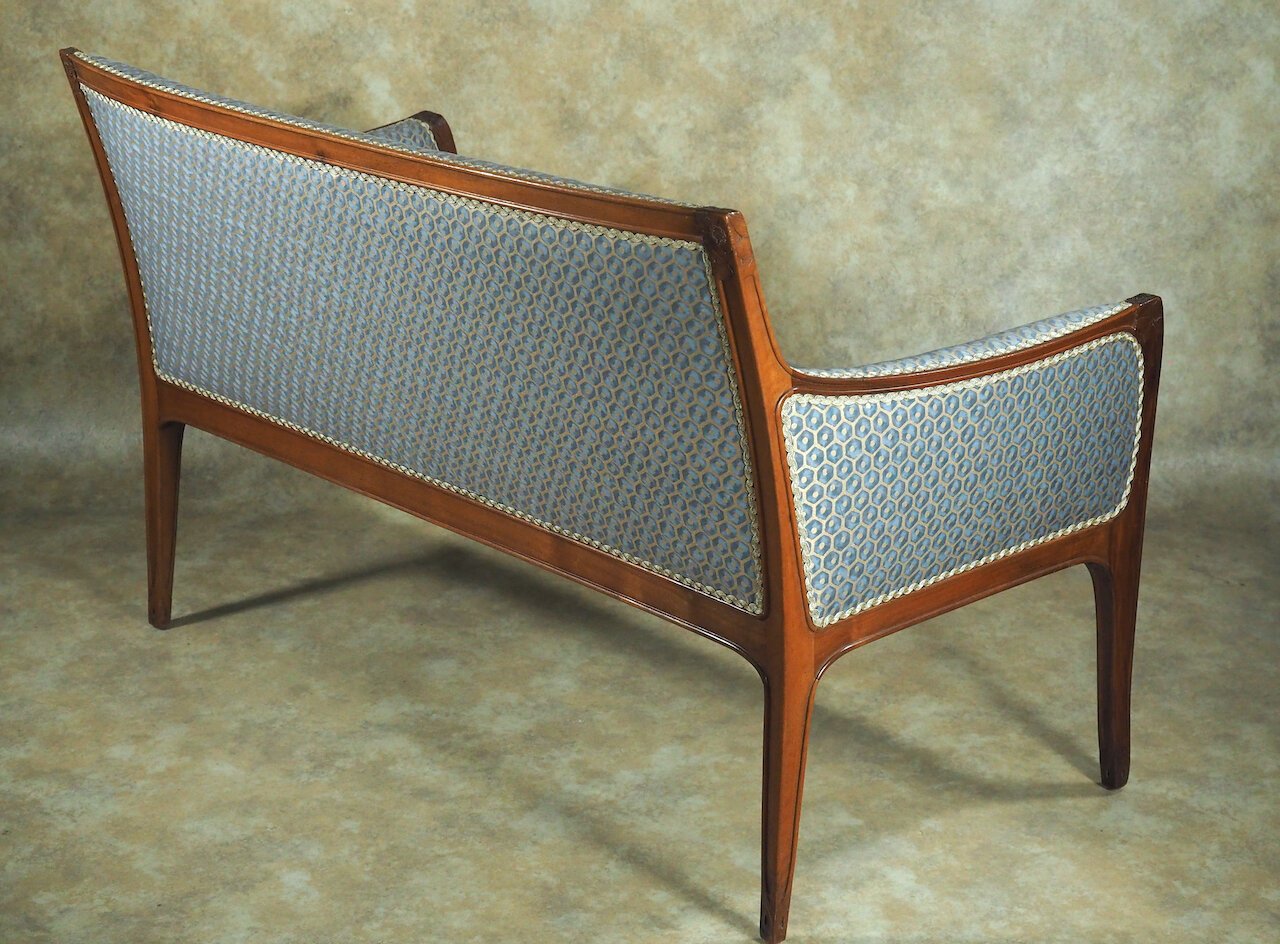 Image 15 of 17
Image 15 of 17

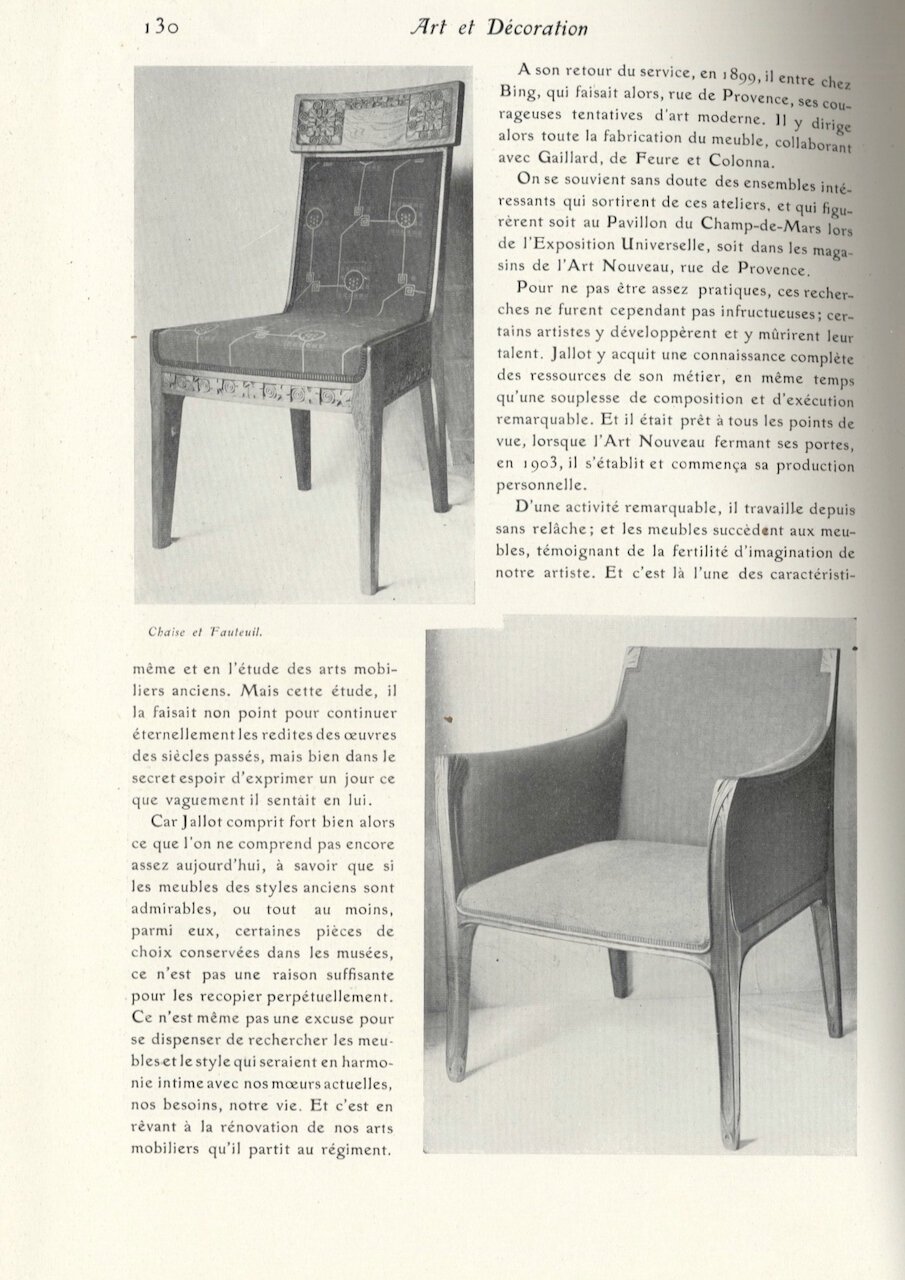 Image 16 of 17
Image 16 of 17

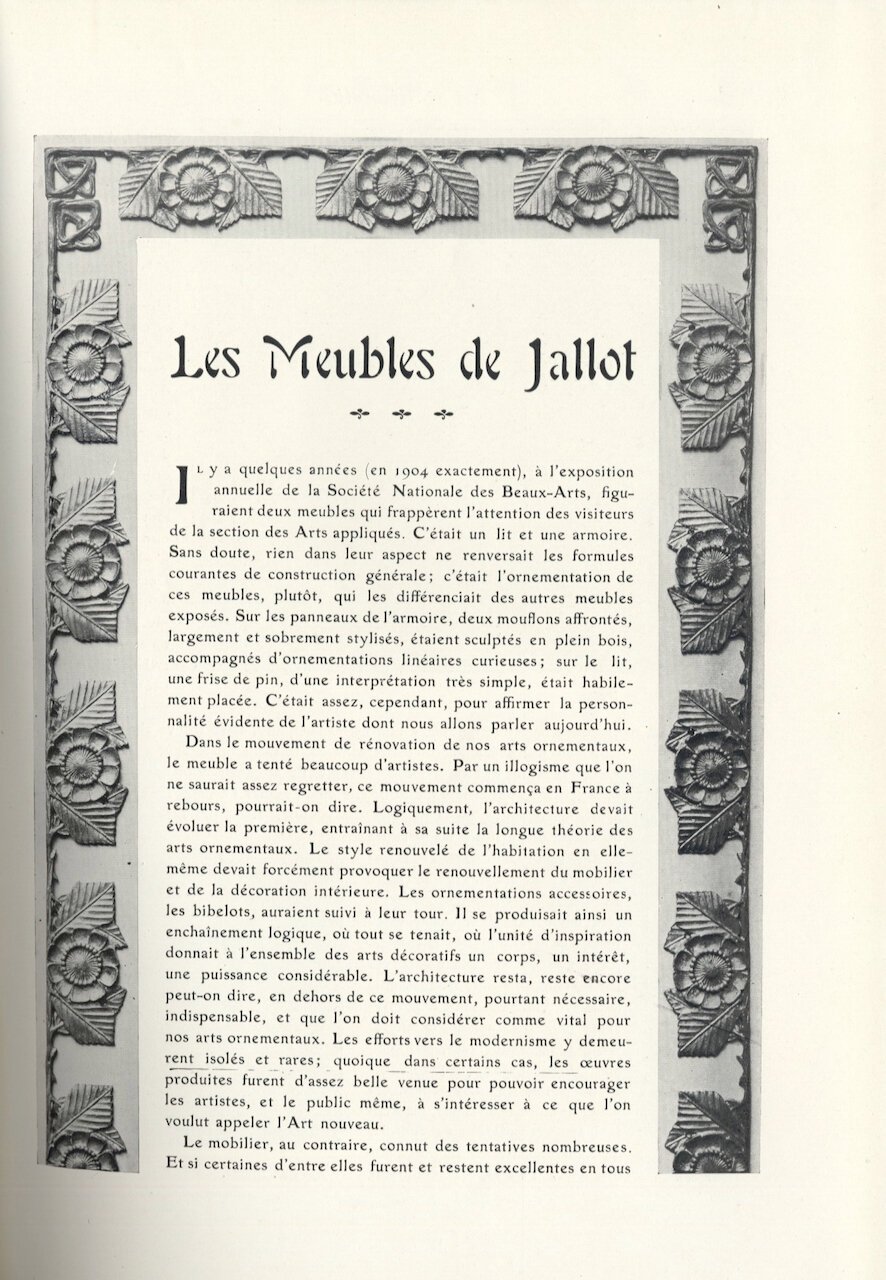 Image 17 of 17
Image 17 of 17


















Leon Jallot seating suite: settee & two armchairs (#1675)
French Art Nouveau/early transitional seating suite by Leon Jallot, circa 1908, in sculpted French walnut. Documented.
LEON JALLOT (1874-1967)
Born in Nantes, July 24, 1874, Leon Jallot studied in Paris but did not go to any school of art. Without any formal training, other than a general refined sense of culture, he opened his own workshop at age 16 and began wood sculpting and making his own furniture.Strictly self-disciplined, he began as a wood carver. By 1899, at the age of just 24, he had worked his way to become Director of the Art Nouveau workshop of the collector, Siegfried Bing, for his shop called l’Art Nouveau in Paris. He remained there until 1901, overseeing production for the shop as well as Bing’s installation at the 1900 Paris Universal Exposition. Jallot therefore participated in the creation of some of the Art Nouveau movement’s most prized works – those designed by the firm’s renowned threesome: Georges de Feure, Eduoard Colonna, and Eugene Gaillard.
In 1901 Jallot became one of the founding members of the first Salon of Societe des Artistes Decorateurs – an organization which produced highly anticipated annual exhibitions through the first half of the 20th Century. In 1903 he established his own decorating workshop where he designed and fabricated furniture, fabrics, carpets, tapestries, glassware, lacqueer and screens.
Jallot was the first of the Art Nouveau designers to turn away from floral ornamentation and to pursue linearism – as early as 1904 his decoration was limited to the natural grain of the wood – and he was an advocate of rich materials rather than over-wrought forms to suggest luxury.
Jallot’s work was shown at the Salons of Societe Nationale des Beaux-Arts from 1908, Salon d’Automne from 1919, and at the SAD throughout. A review of his exhibit at the 1921 Salon des Artistes Decorateurs, in Art et Decoration, said:
“His furniture has the easy elegance of ideas created in a flash and then mulled over – ingenuity, savoir-faire, and patience are all combined in his work.”
He created furniture for the Grand Salon of Une Ambassade Francaise and Hotel du Collectionneur at the 1925 Paris Exposition Internationale des Arts Decoratifs et Industriels Modernes (which would, years later, launch the term “Art Deco”).
From 1921, Leon Jallot partnered with his son, Maurice (see Maurice Jallot’s biography elsewhere on the Calderwood Gallery website), and together they designed a wide variety of furniture and furnishings. His furniture had simple lines and flat surfaces which were lacquered, painted, or shagreen or leather covered. In the 20s the Jallots began to incorporate synthetic materials and metal in their work.
Leon Jallot was also a master of sculpted woods and lacquers. His long mastery of both media was cited, and emphasis given to lacquer’s preservative effect on untreated woods. Decorative panels and screens were carved in bas relief with a variety of themes which were then defined in polychromed lacquers on a gold ground. These were produced into the mid-1930s.
Leon retired in the 1940s and died in 1967. Maurice Jallot continued the family business until nearly 1950.
French Art Nouveau/early transitional seating suite by Leon Jallot, circa 1908, in sculpted French walnut. Documented.
LEON JALLOT (1874-1967)
Born in Nantes, July 24, 1874, Leon Jallot studied in Paris but did not go to any school of art. Without any formal training, other than a general refined sense of culture, he opened his own workshop at age 16 and began wood sculpting and making his own furniture.Strictly self-disciplined, he began as a wood carver. By 1899, at the age of just 24, he had worked his way to become Director of the Art Nouveau workshop of the collector, Siegfried Bing, for his shop called l’Art Nouveau in Paris. He remained there until 1901, overseeing production for the shop as well as Bing’s installation at the 1900 Paris Universal Exposition. Jallot therefore participated in the creation of some of the Art Nouveau movement’s most prized works – those designed by the firm’s renowned threesome: Georges de Feure, Eduoard Colonna, and Eugene Gaillard.
In 1901 Jallot became one of the founding members of the first Salon of Societe des Artistes Decorateurs – an organization which produced highly anticipated annual exhibitions through the first half of the 20th Century. In 1903 he established his own decorating workshop where he designed and fabricated furniture, fabrics, carpets, tapestries, glassware, lacqueer and screens.
Jallot was the first of the Art Nouveau designers to turn away from floral ornamentation and to pursue linearism – as early as 1904 his decoration was limited to the natural grain of the wood – and he was an advocate of rich materials rather than over-wrought forms to suggest luxury.
Jallot’s work was shown at the Salons of Societe Nationale des Beaux-Arts from 1908, Salon d’Automne from 1919, and at the SAD throughout. A review of his exhibit at the 1921 Salon des Artistes Decorateurs, in Art et Decoration, said:
“His furniture has the easy elegance of ideas created in a flash and then mulled over – ingenuity, savoir-faire, and patience are all combined in his work.”
He created furniture for the Grand Salon of Une Ambassade Francaise and Hotel du Collectionneur at the 1925 Paris Exposition Internationale des Arts Decoratifs et Industriels Modernes (which would, years later, launch the term “Art Deco”).
From 1921, Leon Jallot partnered with his son, Maurice (see Maurice Jallot’s biography elsewhere on the Calderwood Gallery website), and together they designed a wide variety of furniture and furnishings. His furniture had simple lines and flat surfaces which were lacquered, painted, or shagreen or leather covered. In the 20s the Jallots began to incorporate synthetic materials and metal in their work.
Leon Jallot was also a master of sculpted woods and lacquers. His long mastery of both media was cited, and emphasis given to lacquer’s preservative effect on untreated woods. Decorative panels and screens were carved in bas relief with a variety of themes which were then defined in polychromed lacquers on a gold ground. These were produced into the mid-1930s.
Leon retired in the 1940s and died in 1967. Maurice Jallot continued the family business until nearly 1950.
